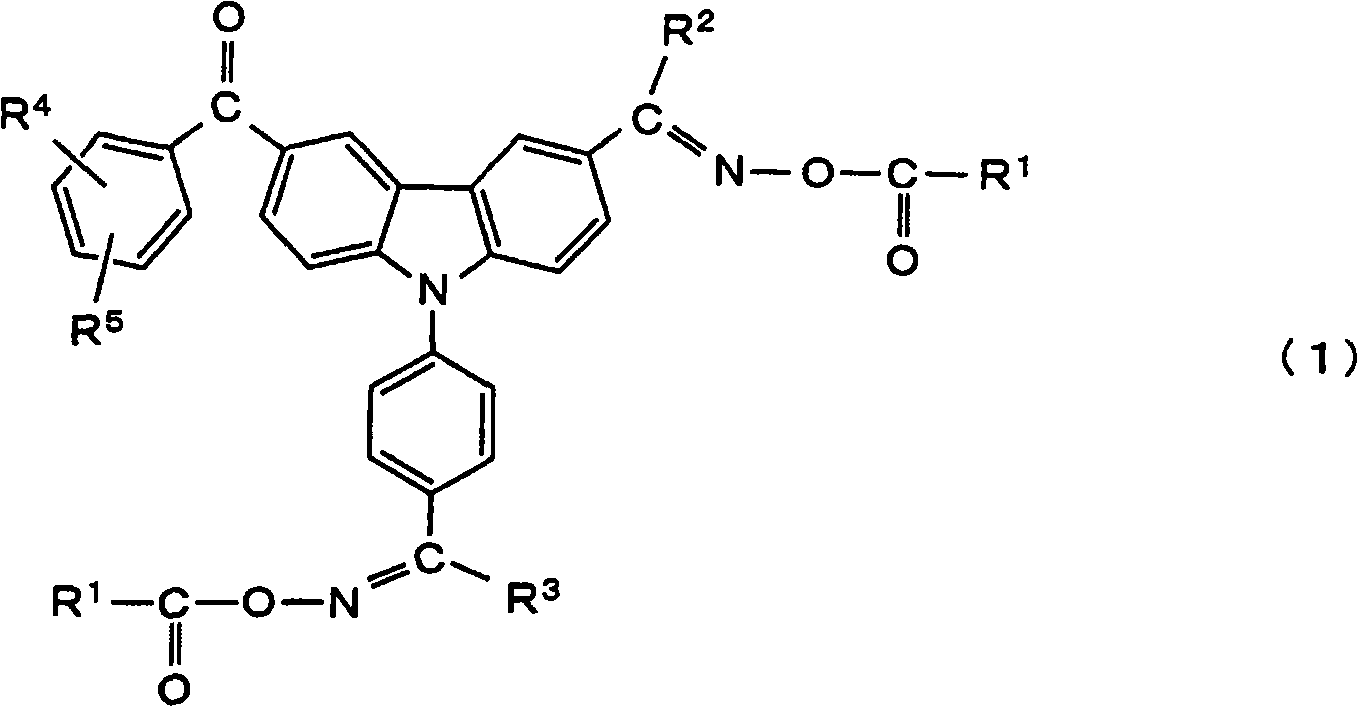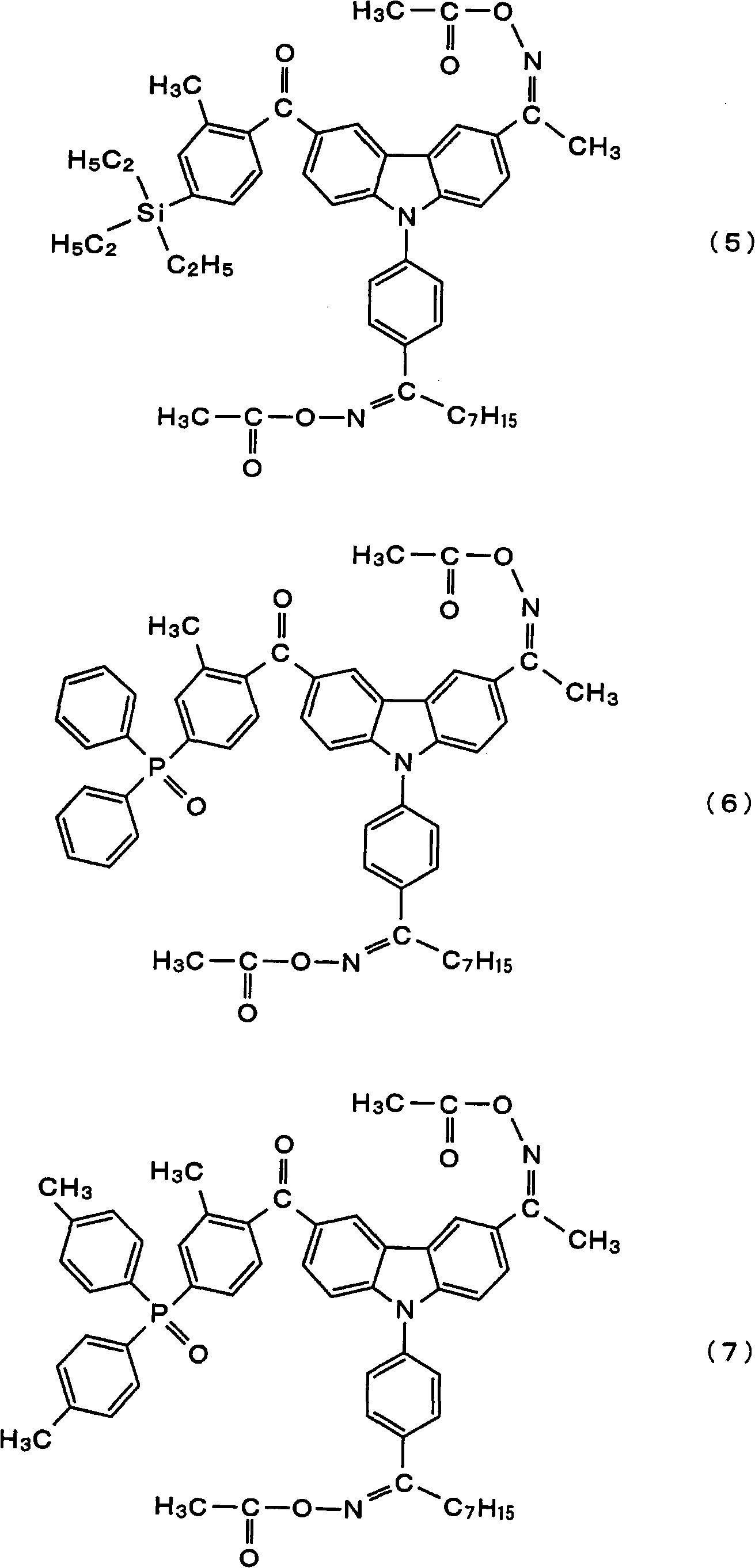Novel compound and radiation sensitive composition comprising the same
A radiation-sensitive technology, applied in the field of radiation-sensitive compositions, to achieve high radiation sensitivity, good solubility, and easy preparation
- Summary
- Abstract
- Description
- Claims
- Application Information
AI Technical Summary
Problems solved by technology
Method used
Image
Examples
preparation example Construction
[0120] The radiation-sensitive composition of the present invention can be prepared by well-mixing the aforementioned [A] photopolymerization initiator, [B] the polymerizable compound having an ethylenically unsaturated double bond, and the aforementioned other optional components. The radiation-sensitive composition is preferably used in a solution state dissolved in an appropriate solvent. For example, a radiation-sensitive composition in a solution state can be prepared by mixing [A] a photopolymerization initiator, [B] a polymerizable compound having an ethylenically unsaturated double bond, and other components optionally added in a solvent at a predetermined ratio. .
[0121] As the solvent used in the preparation of the radiation-sensitive composition, each component capable of uniformly dissolving [A] the photopolymerization initiator, [B] the polymerizable compound having an ethylenically unsaturated double bond, and other optional components can be used. At the same...
Synthetic example A-1
[0152] Compound (A-1) (compound represented by the above formula (2)) was synthesized as the final product (viii) according to the following synthesis route.
[0153]
[0154] In the formula, Me is a methyl group, and Ac is an acetyl group.
[0155] Step (I): Synthesis of intermediate (ii) by condensation of 1-(4-fluorophenyl)-oct-1-one (i) and carbazole
[0156] A cooling tube was installed in a 1 L three-necked flask, and 50 g (299 mmol) of carbazole was dissolved in 500 mL of dimethyl sulfoxide under a nitrogen atmosphere. 63 g (284 mmol) of 1-(4-fluorophenyl)-oct-1-one and 103 g (748 mmol) of potassium carbonate were added thereto, and heated and stirred at a reaction temperature of 135° C. for 12 hours. The reaction solution was poured into ice, the precipitated solid was suction filtered, and the solid was washed with distilled water. The crude crystals obtained here were recrystallized from tert-butyl methyl ether to obtain 105 g of intermediate (ii).
[0157] Ste...
Synthetic example A-2
[0183] The compound represented by the above formula (4) is synthesized by changing the synthesis route of the above (A-1). In the step (II) of the synthetic route of above-mentioned (A-1), in the eggplant type flask of 200mL, add the 4-trimethylsilyl-2-methylbenzoic acid of 33.7g (162mmol) and 193g (1620mmol) ) thionyl chloride, stirred at room temperature 25°C, and then, 1 mL of dimethylformamide was added, followed by stirring for 20 hours. The reaction liquid was distilled off under reduced pressure to obtain 36.7 g of 4-trimethylsilyl-2-methylbenzoyl chloride.
[0184] In a 2L eggplant-shaped flask, add 59.8g (162mmol) of the intermediate (ii) obtained above, then add 1000mL of dichloromethane to dissolve the intermediate (ii), add 75.6g (567mmol) of aluminum chloride, and pass through the ice After cooling, the temperature of the reaction solution was lowered to 10°C. A solution in which 36.7 g (162 mmol) of the 4-trimethylsilyl-2-methylbenzoyl chloride synthesized abo...
PUM
| Property | Measurement | Unit |
|---|---|---|
| thickness | aaaaa | aaaaa |
| diameter | aaaaa | aaaaa |
Abstract
Description
Claims
Application Information
 Login to View More
Login to View More - R&D
- Intellectual Property
- Life Sciences
- Materials
- Tech Scout
- Unparalleled Data Quality
- Higher Quality Content
- 60% Fewer Hallucinations
Browse by: Latest US Patents, China's latest patents, Technical Efficacy Thesaurus, Application Domain, Technology Topic, Popular Technical Reports.
© 2025 PatSnap. All rights reserved.Legal|Privacy policy|Modern Slavery Act Transparency Statement|Sitemap|About US| Contact US: help@patsnap.com



